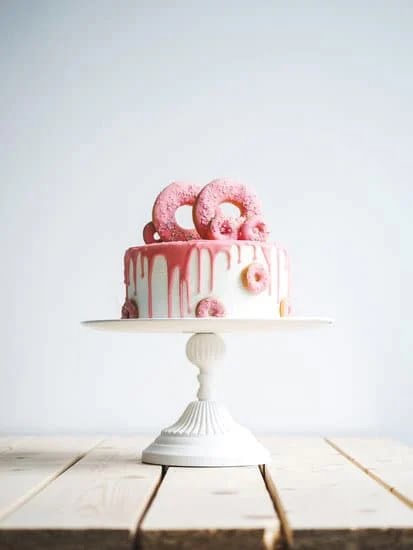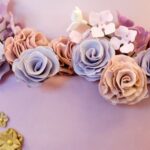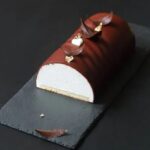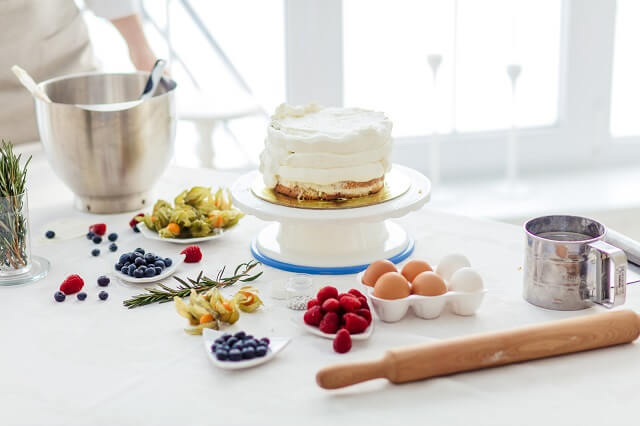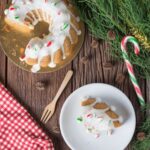Cake decorating is a beloved art form that allows bakers to transform simple cakes into stunning works of edible art. From elegant wedding cakes to whimsical birthday creations, the possibilities are endless when it comes to cake decoration. In this article, we will delve into the world of unique cake decorating techniques, where creativity knows no bounds.
Cake decorating holds significant importance in various celebrations and events. The right design can turn an ordinary cake into the centerpiece of a party, capturing the theme and essence of the occasion.
As more people embrace baking as a hobby and profession, there has been a surge in demand for distinct and one-of-a-kind cake decorations. This article aims to satisfy that demand by exploring a wide range of techniques that will help decorators elevate their creations to new heights.
Prepare to embark on a journey through innovative cake decorating methods that will leave you inspired and brimming with fresh ideas. From sculpting intricate designs with fondant to piping delicate buttercream flowers, we will cover it all. Whether you are just starting your cake decorating journey or looking to expand your repertoire, these unique techniques promise to push boundaries and unleash your inner artist. So let’s dive in and discover the exciting world of unique cake decorating techniques.
Fondant Sculpting
Fondant sculpting is a unique cake decorating technique that allows bakers to create edible masterpieces. Fondant, a smooth and pliable sugar paste, offers endless possibilities for creating intricate designs on cakes. Whether you’re a professional pastry chef or an amateur baker, fondant sculpting can elevate your cake decoration skills to new heights.
One of the key advantages of using fondant is its versatility. It can be rolled out and draped over a cake to create a flawless, smooth surface, or it can be shaped into 3D figures, flowers, or other decorative elements. To sculpt with fondant, start by kneading it until it becomes soft and pliable.
Then, roll it out to the desired thickness using a rolling pin. From there, use cookie cutters or other fondant tools to cut out shapes and create different design elements.
To achieve professional results with fondant sculpting, there are some tips and tricks to keep in mind. First, make sure your work surface is clean and lightly dusted with powdered sugar or cornstarch to prevent sticking. Additionally, use edible glue or water to attach different fondant pieces together securely. Finally, practice patience and take your time when working with delicate details – sometimes less is more when it comes to intricate fondant designs.
Creating visually stunning cakes through fondant sculpting requires both skill and creativity. However, with practice and experimentation, anyone can master this unique cake decorating technique. So why not give it a try? Start small by adding simple fondant decorations to your cakes and gradually work your way up to more complex designs. The possibilities are endless when it comes to bringing edible artistry into the world of cake decoration.
Fondant Sculpting Techniques
| Step | Description |
|---|---|
| 1 | Knead the fondant until it becomes soft and pliable. |
| 2 | Roll out the fondant to the desired thickness using a rolling pin. |
| 3 | Cut out shapes and create different design elements using fondant tools or cookie cutters. |
| 4 | Attach different fondant pieces together securely using edible glue or water. |
Remember, fondant sculpting is an art form that requires patience and practice. With dedication and creativity, you can create edible masterpieces that will impress your friends, family, and clients. So don’t be afraid to explore the world of fondant sculpting and let your imagination run wild.
Piping Designs with Buttercream
The art of piping buttercream onto cakes is a classic and beloved cake decorating technique that allows bakers to take their creations to the next level. With buttercream as their medium, decorators can create eye-catching borders, flowers, and intricate patterns that add a touch of elegance and sophistication to any cake.
To achieve smooth and precise results when piping designs with buttercream, it is important to start with the right consistency of frosting. A stiff buttercream is ideal for creating clean lines and sharp edges, while a softer buttercream is perfect for achieving delicate, wispy decorations. It is also important to use the right tools, such as piping bags and tips, to ensure optimal control over the flow of frosting.
One of the key techniques in piping designs with buttercream is building up layers of frosting to create dimension and texture. This can be done by layering different colors or shades of buttercream, or by adding additional layers on top of previously piped designs. By varying pressure and speed while piping, decorators can achieve different effects such as ruffles, rosettes, or even intricate lace patterns.
| Tips for Piping Designs with Buttercream | Techniques for Achieving Smooth Results |
|---|---|
| Choose the right consistency of buttercream for your desired design | Start practicing with basic shapes before moving on to more complex designs |
| Use high-quality piping bags and tips for better control over frosting | Avoid applying too much pressure on the bag – let the weight of the bag do most of the work |
| Create a guide or template for intricate patterns to ensure consistency | Practice using different piping tips to achieve different textures and designs |
| Keep practicing and experimenting with new designs to improve your skillset | Chill the cake before piping to prevent the buttercream from melting too quickly |
By mastering the art of piping designs with buttercream, bakers can elevate their cake decoration skills and create visually stunning cakes that are sure to impress. With a little practice and creativity, decorators can take their cakes to the next level and turn them into edible works of art.
Airbrushing Techniques
Airbrushing is a unique cake decorating technique that can add depth, dimension, and a wow factor to any cake. With an airbrush kit, decorators can achieve stunning effects by utilizing different color gradients and shading techniques. This section will delve into the world of airbrushing, providing tips and tricks for mastering this technique.
Unleashing Creativity with an Airbrush Kit
One of the greatest advantages of using an airbrush kit is the ability to unleash creativity and create intricate designs on cakes. The airbrush allows decorators to achieve smooth transitions between colors and create realistic textures such as marble or wood grain. By experimenting with different techniques, decorators can elevate their designs to new heights.
Achieving Stunning Effects with Different Color Gradients and Shading
Airbrushing offers endless possibilities when it comes to creating captivating color gradients and shading effects on cakes. By starting with a light base color and gradually building up layers of darker shades, decorators can achieve a three-dimensional look that adds depth to the design. Additionally, shading techniques can be used to create highlights and shadows, further enhancing the overall visual effect of the cake.
Tips for Mastering the Airbrushing Technique
While airbrushing may seem intimidating at first, with practice and some helpful tips, anyone can master this technique. Here are some key tips for achieving professional-looking results:
- Practice on paper first: Before airbrushing your cake, it’s important to practice your technique on a piece of paper or cardboard. This will allow you to get comfortable with controlling the air pressure and paint flow.
- Maintain consistency in paint thickness: To achieve consistent results, make sure your paint is at the right thickness. Test it on a piece of paper before applying it to the cake.
- Control the distance from the cake: The distance between the airbrush and the cake will determine the intensity of the color. Experiment with different distances to achieve the desired effect.
- Build layers gradually: Instead of applying a heavy coat of paint all at once, build up layers gradually. This will help you achieve a smooth and even finish.
By following these tips and practicing regularly, decorators can unlock the full potential of airbrushing and create cakes that are visually stunning and truly unique.
Airbrushing is just one example of the many unique cake decorating techniques available today. The use of an airbrush kit allows decorators to add depth, dimension, and intricate designs to their creations. With practice and experimentation, anyone can master this technique and elevate their cake decorating skills to new levels. So why not give it a try and see how airbrushing can transform your cakes into edible works of art?
Stenciling
Cake stencils provide a quick and easy way to create intricate designs on cakes, making them a popular choice among cake decorators. The use of stencils allows for consistent patterns and designs, ensuring a professional finish every time. Whether you’re a beginner or an experienced decorator, stenciling can take your cake decoration to the next level.
Using cake stencils involves a few simple steps that can yield astonishing results. Here’s a step-by-step guide to using stencils for intricate designs:
- Prepare your cake: Start by preparing your cake with a smooth layer of icing or fondant. Ensure that the surface is clean and free from any flaws or imperfections.
- Position the stencil: Carefully place the stencil on top of the cake, ensuring it is centered and aligned properly. You can secure it in place with some edible adhesive or tape if needed.
- Apply color: Use an airbrush, spray food coloring, or icing sugar to apply color over the stencil openings. Work gently and evenly to prevent any bleeding or smudging. Alternatively, you can use a brush to apply luster dust or edible paint for a more delicate touch.
- Remove the stencil: Once you’ve applied the color, carefully lift the stencil away from the cake without dragging it across the surface to avoid ruining your design.
By following these steps, you can effortlessly create mesmerizing decorative elements on your cakes using stencils.
If you’re looking for unique stencil ideas to elevate your cake decoration, consider experimenting with different patterns and themes. Some popular choices include floral motifs, geometric shapes, lace-inspired designs, and even custom monograms or logos for special occasions such as weddings or corporate events.
Mirror Glaze
Mirror glaze is a popular cake decorating technique that adds a stunning and glossy finishing touch to any cake. It creates a mirror-like surface on the cake, giving it an elegant and professional appearance. In this section, we will explore the mesmerizing effect of mirror glaze, provide step-by-step instructions for achieving a flawless mirror glaze, and offer tips for experimenting with different colors and patterns.
To achieve a flawless mirror glaze, start by preparing your cake by crumb coating it with buttercream or ganache. This will create a smooth base for the glaze to adhere to. Once your cake is prepared, it’s time to make the mirror glaze. Mirror glaze is typically made using gelatin, water, sugar, sweetened condensed milk, and white chocolate. The gelatin helps give the glaze its smooth consistency.
After making the glaze mixture, you can add food coloring or use different shades of chocolate to create a variety of colors. Pour the glaze over your cake gradually, ensuring that every inch is covered evenly. Use an offset spatula to gently guide the glaze over the sides of the cake. The excess glaze will drip off onto a tray underneath. Allow the glaze to set for about 10-15 minutes before carefully transferring your cake onto a serving plate.
Experimenting with different colors and patterns can take your mirror glazed cakes to another level. You can create marble effects by swirling multiple colored glazes together or use edible glitter or sprinkles for added sparkle. Additionally, you can try using different techniques like feathering or marbling using contrasting colors for unique designs.
Hand-Painted Cakes
When it comes to cake decoration, one technique that allows for endless creativity and personal expression is hand-painting. Hand-painted cakes are not only visually striking but also provide a unique opportunity to channel your inner artist and create something truly one-of-a-kind. Whether you have a natural talent for painting or want to try something new, this section will delve into the art of hand-painted cake decoration.
To begin, it is essential to choose the right edible paints and brushes for your cake. Edible paints specifically made for cake decoration are available in various colors and consistencies, ranging from water-based to powdered options. Experimenting with different brands and types can help you find the ones that work best for your desired outcome. Furthermore, investing in high-quality brushes with different sizes and shapes can significantly impact the precision and ease of your painting.
Techniques for painting intricate designs on cakes require practice and patience. Start by sketching out your design lightly on the cake using a food-safe pencil or toothpick as a guide before applying any paint. This step ensures better control over your brushstrokes and prevents mistakes that may be harder to fix later on. When painting, remember to use light, gentle strokes and build up layers gradually to achieve depth and dimension in your designs.
Hand-painted cakes offer endless possibilities when it comes to choosing designs. From delicate floral patterns to whimsical landscapes or even realistic portraits, there are no limits to what you can create with this technique. Additionally, incorporating elements like metallic accents or intricate details can further enhance the visual impact of your hand-painted cake.
Overall, hand-painted cakes allow you to tap into your artistic abilities while creating edible masterpieces capable of leaving a lasting impression. With patience, practice, and a touch of imagination, you can elevate your cake decoration game by channeling your inner artist through hand-painting techniques. So go ahead, unleash your creativity, and let your brushstrokes tell a unique story on your next cake.
Unique Ingredients
Adding unexpected flavors and textures to cake decoration
One way to truly make a cake stand out is by incorporating unique ingredients that add unexpected flavors and textures. By thinking outside the box, bakers can elevate their cake decoration to a whole new level. Incorporating unconventional elements into cake design not only creates visual interest but also tantalizes taste buds.
For example, adding spices like cardamom or chai tea to the cake batter can create a unique flavor profile that surprises and delights guests. In terms of texture, bakers can experiment with including crunchy elements such as crushed nuts or crispy caramel in between layers of frosting. These unexpected additions provide a delightful contrast to the softness of the cake and add an exciting element to each bite.
Exploring the use of innovative ingredients like edible gold flakes, flowers, and more
To make cakes even more visually stunning, bakers have been exploring the use of innovative ingredients like edible gold flakes, flowers, and more. Edible gold flakes are an opulent addition that instantly adds a touch of luxury to any cake. Similarly, incorporating edible flowers not only creates beautiful aesthetics but also infuses floral notes into the dessert.
Experimenting with other unconventional elements such as matcha powder or activated charcoal can result in striking colors and intriguing flavors. These ingredients offer opportunities for creating visually captivating designs while pleasing the palate at the same time.
Tips for incorporating unique ingredients while maintaining overall balance
While experimenting with unique ingredients is exciting, it is important to maintain a sense of balance so that all the flavors and textures harmoniously come together. Here are some tips for incorporating unique ingredients while ensuring overall balance:
- Start with small quantities: When using unconventional elements like spices or herbs, start with smaller amounts to get an idea of how it enhances or changes the flavor profile without overpowering it.
- Balance sweetness: If adding ingredients that are tangy or salty, be sure to adjust the sweetness levels accordingly to maintain the right balance.
- Consider complementary flavors: When incorporating unique ingredients, consider how they will pair with other flavors already present in the cake. Choose ingredients that complement each other and create a harmonious taste experience.
By embracing unique ingredients and experimenting with unconventional elements, bakers can take their cake decoration to new heights. These innovative additions not only add visual appeal but also surprise and delight guests with unexpected flavors and textures. So, why not unleash your creativity and elevate your next cake creation by incorporating some truly unique ingredients?
Experimental Techniques
In the world of cake decoration, there are those who are content with traditional techniques, and then there are those who dare to push the boundaries and explore experimental methods. These avant-garde decorators use innovative and unconventional techniques to create visually stunning and unique cakes that leave a lasting impression.
By thinking outside of the box, they challenge the norms of cake decoration and inspire others to embrace their own creativity. In this section, we will delve into the realm of experimental techniques in cake decoration and discover some truly extraordinary creations.
One such technique that has gained popularity in recent years is gravity-defying designs. With this technique, decorators defy gravity by crafting intricate structures that seemingly hover above the cake. From floating tiers to suspended decorations, these gravity-defying cakes are both awe-inspiring and whimsical. Although this technique requires careful planning and engineering, the end result is a jaw-dropping spectacle that leaves guests wondering how it was achieved.
Another experimental technique that has made waves in the cake decorating world is using cake lace as a medium for intricate designs. Similar to actual lace fabric, cake lace is a flexible edible material that can be used to create delicate patterns and textures on cakes.
By adding layers of cake lace onto fondant or buttercream-covered cakes, decorators can achieve an ethereal and elegant look that is reminiscent of fine lacework. This technique allows for endless possibilities in creating unique and intricate designs on cakes.
Lastly, incorporating alternative mediums into cake decoration has become a way for decorators to express their artistry in unconventional ways. From using rice paper to create origami-inspired elements on cakes, to incorporating sugar sculpture techniques for abstract designs, these decorators utilize unexpected materials to take their creations to new heights. By experimenting with non-traditional mediums, they push the boundaries of what can be done with cake decoration and inspire others to explore new artistic avenues.
Conclusion
In conclusion, the world of unique cake decorating techniques is a vast and exciting one that offers endless possibilities for creating visually striking and memorable cakes. Throughout this article, we have explored a range of techniques including fondant sculpting, piping designs with buttercream, airbrushing, stenciling, mirror glaze, hand-painted cakes, the use of unique ingredients, and experimental techniques. Each technique has its own unique flair and offers cake decorators the opportunity to push their creativity to new heights.
It is essential to embrace the artistry of these unique cake decorating techniques. By incorporating these methods into your repertoire, you can elevate your cake decoration skills and create awe-inspiring edible masterpieces. With step-by-step guides, tips and tricks for achieving professional results, and ideas for experimentation, this article has provided a comprehensive overview of the various approaches available.
Now is the time to unleash your creativity and try new methods. Don’t be afraid to think outside the box and push boundaries when it comes to cake decoration. The ultimate goal is to create cakes that not only taste delicious but also leave a lasting visual impression on those who see them.
By embracing the artistry of these unique cake decorating techniques, you have the power to transform ordinary cakes into extraordinary works of art. So go ahead, experiment with different techniques, incorporate innovative elements and ingredients, and embrace the limitless possibilities that this world of cake decoration has to offer. Let your imagination run wild as you embark on a journey towards creating stunning cakes that are truly one-of-a-kind.
Frequently Asked Questions
What are the 5 kinds of cake decorating?
There are several different types of cake decorating techniques that can be used to create visually stunning and delicious cakes. One common method is icing or frosting the cake, which involves applying a smooth layer of buttercream, fondant, or ganache over the surface of the cake. Another type of decoration is piping, where you create various designs using a pastry bag and different tips. This technique allows you to add intricate details, borders, or personalized messages onto your cake.
Additionally, you can use edible decorations such as sprinkles, edible flowers, or chocolate curls to give your cake more texture and visual appeal. Sculpted cakes are also popular, where you shape the cake into specific designs such as animals or objects using carving techniques. Finally, airbrushing is another technique used in cake decorating that involves spraying edible colors onto the cake to achieve vibrant and unique designs.
How do you make a cake look special?
To make a cake look special and stand out from the crowd, there are several key elements to consider. One way is by choosing an interesting flavor combination that complements the occasion or theme of the cake. Consider incorporating unique ingredients or flavors that will surprise and delight your guests’ taste buds.
Another important aspect is creating a visually appealing design through careful decoration choices. This could involve working with different colors and shades, using various textures like fondant frills or ruffles, or adding decorative elements such as edible flowers or delicate sugar paste sculptures on top of the cake. Additionally, paying attention to presentation can make all the difference – consider using elegant serving ware and garnishes when displaying your masterpiece.
How can I improve my cake decorating skills?
Improving your cake decorating skills requires practice, patience, and continuous learning. A great place to start is by researching different techniques online or investing in tutorial books specifically focused on cake decorating. By studying examples and trying out new methods in a controlled environment, you can gradually become familiar with various piping tips and develop better control over icing consistency for smoother application.
Taking classes or workshops from professional bakers can also provide invaluable hands-on experience and tips for mastering specific skills. Additionally, experimenting with different tools, ingredients, and design patterns can help expand your repertoire and hone your abilities. Regularly challenging yourself to create more complex designs and regularly seeking feedback from others can also help you identify areas for improvement and enhance your cake decorating expertise over time.

Welcome to our cake decorating blog! My name is Destiny Flores, and I am the proud owner of a cake decorating business named Cake Karma. Our mission is to provide delicious, beautiful cakes for all occasions. We specialize in creating custom cakes that are tailored specifically to each customer’s individual needs and tastes.

